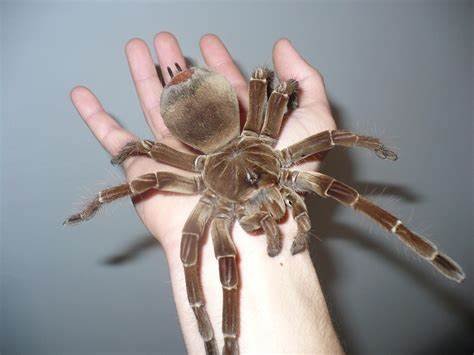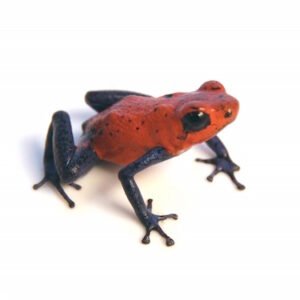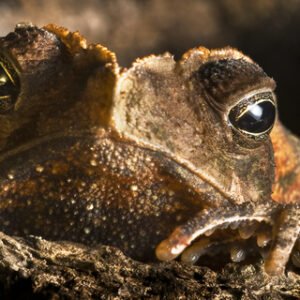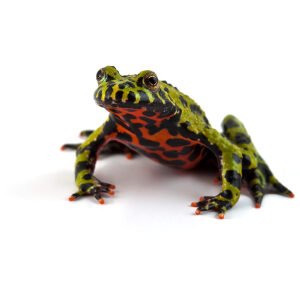Everything You Need to Know About Buying a Goliath Birdeater
Introduction to the Goliath Birdeater
The Goliath Birdeater (Theraphosa blondi) holds the distinct title of the largest spider in the world, captivating many arachnid enthusiasts with its size and intriguing characteristics. This formidable species can grow up to a leg span of nearly 12 inches and weigh over 5 ounces, presenting an imposing presence that can be both awe-inspiring and intimidating. The Goliath Birdeater is native to the rainforests of South America, primarily inhabiting the humid, tropical environments of countries like Venezuela, Suriname, and Brazil. These spiders often burrow in the soft, rich soil of the forest floor, providing them with a sheltered habitat that protects them from potential threats.
In terms of appearance, the Goliath Birdeater boasts a remarkable combination of features. Its hairy body and large fangs, capable of delivering venom, contribute to its intimidating reputation. However, contrary to the myths suggesting they hunt birds, their diet consists primarily of insects, small mammals, and occasionally amphibians. Known for their unique behaviors, Goliath Birdeaters exhibit fascinating traits such as their ability to defend themselves by releasing a cloud of irritating hairs from their abdomen. This defense mechanism can deter potential predators and is just one of several adaptations that enable them to thrive in the wild.
For those considering adding a Goliath Birdeater to their collection, it is essential to understand their specific care requirements and temperament. While these spiders can be captivating pets, their size and needs may entail a substantial commitment from their owners. The uniqueness of the Goliath Birdeater not only appeals to seasoned arachnid collectors but also draws in newcomers interested in the exotic and the extraordinary realms of nature. As one delves deeper into the characteristics of the Goliath Birdeater, the allure of this fascinating creature becomes increasingly evident, sparking curiosity and consideration for potential ownership.
Where to Find Goliath Birdeaters for Sale
When considering the purchase of a Goliath Birdeater, identifying reputable sources is essential for ensuring a healthy and well-cared-for specimen. These impressive tarantulas are not commonly found in local pet stores, so it is advisable to look into specialized retailers who focus on exotic pets. Online platforms can provide a wider selection, featuring different age groups, sizes, and color variations of Goliath Birdeaters.
Reputable online retailers often include detailed care guides and provide information about the tarantula’s lineage, which can be indicative of its health and temperament. Moreover, these retailers tend to have positive customer reviews and offer guarantees regarding the live arrival of their animals. However, it is crucial to verify that the seller is compliant with legal regulations regarding the sale of exotic pets, as laws can vary significantly by region.
In addition to online platforms, purchasing Goliath Birdeaters from responsible breeders is another option that should be considered. Breeders with a good reputation are generally more knowledgeable about the species and can provide insights into care needs and behaviors. They also tend to ensure that their breeding practices comply with ethical standards that promote the long-term well-being of the animals. Attending exotic pet shows may present opportunities to meet breeders and see their stock in person, allowing potential buyers to make informed decisions.
Ultimately, whether buying from pet stores, online retailers, or breeders, it is advisable to prioritize sellers who emphasize humane practices and adhere to local laws regarding exotic pets. Conducting thorough research and asking purposeful questions about the Goliath Birdeater’s health, diet, and care requirements can help in finding the right source for your new pet.
Caring for Your Goliath Birdeater
The Goliath Birdeater, scientifically known as Theraphosa blondi, is a fascinating yet demanding species that requires specific care to ensure its well-being. Understanding the habitat setup is fundamental for any owner. A proper enclosure should mimic its natural rainforest environment, which entails a terrarium with ample floor space (at least 10 to 20 gallons for adults) and a secure lid to prevent escape. Substrate depth is crucial, as these spiders love to burrow; therefore, a minimum of 4 to 6 inches of peat moss or coconut fiber is recommended. Adding hiding spots using cork bark or ceramic pots will help create a sense of security.
Diet plays an important role in the life of a Goliath Birdeater. In their natural habitat, these spiders primarily feed on insects, and they have been known to consume small vertebrates. For captive care, their diet should include a variety of appropriately sized prey, such as crickets, roaches, and mealworms. Adult spiders may require food every one to two weeks, while juveniles may need more frequent feedings. It is also essential to provide fresh water in a shallow dish to maintain hydration.
Maintaining proper temperature and humidity levels is vital for the health of the Goliath Birdeater. Ideally, the temperature should range between 75°F to 85°F, and humidity levels must remain high, ideally between 60% to 80%. This can be achieved through misting the enclosure regularly and providing a substrate that retains moisture. When handling the Goliath Birdeater, it is important to proceed with caution; these spiders can be defensive and may bite when threatened. Using a catch cup for transport rather than handling is advised for both the safety of the spider and the owner.
Common Concerns and Myths About Goliath Birdeaters
The Goliath Birdeater (Theraphosa blondi), renowned for being the largest spider in the world, often evokes fear and apprehension among potential owners. Many misconceptions surround this remarkable arachnid, primarily stemming from its intimidating size and appearance. Addressing these concerns is essential to fostering a comprehensive understanding of this species. One prevalent myth is that Goliath Birdeaters possess lethal venom capable of harming humans. In reality, while they do have venom, its potency is significantly weaker than that of a typical bee sting. This species is non-aggressive and will usually retreat rather than attack when threatened. The fear of venom is therefore largely overstated.
Another common concern relates to their temperament. It is a misconception that Goliath Birdeaters are aggressive or hostile creatures. Contrary to this belief, their nature is largely docile as long as they do not feel threatened. As with any tarantula, handling should be approached with caution; however, they can adapt to a well-managed environment and may eventually display a more relaxed demeanor. Potential owners should educate themselves about their needs, habitat, and behavior to foster a healthy relationship with their Goliath Birdeater.
Behavioral patterns, including their occasional burrowing habits, are frequently misunderstood as signs of illness or stress. In reality, Goliath Birdeaters are natural diggers, and this behavior is part of their instinct to create a secure environment. Providing adequate substrate for burrowing can enhance their well-being. Additionally, a general lack of understanding about spider care often leads to misguided practices. Instead of avoiding Goliath Birdeaters, enthusiasts should embrace the opportunity to learn more about their care, behavior, and conservation status, thus promoting a more accurate representation of these fascinating creatures.





